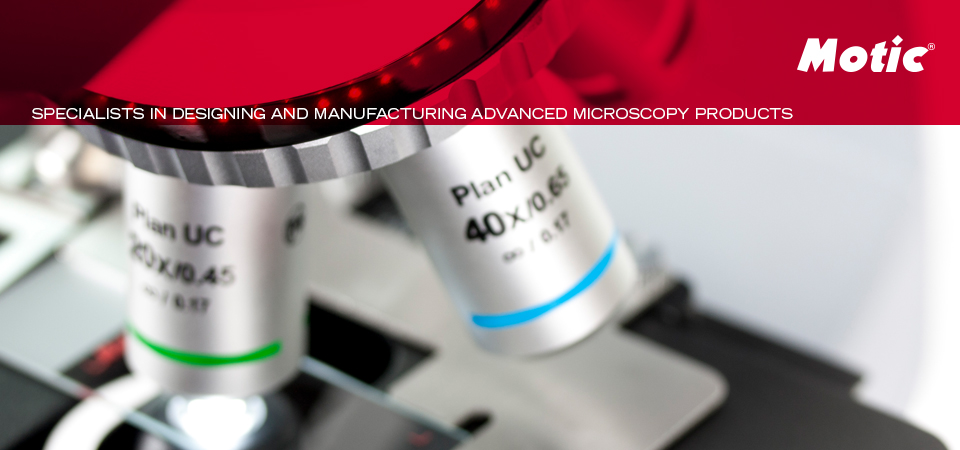But there is a wider understanding of this guideline necessary to get the best possible image quality. A section of an organ tissue, a smear of a human mucous membrane, adherent or floating cells in microbiology: They all need a carrier or vessel to be evaluated under the microscope.
Sections or smears are fixed on a glass slide, in most cases conserved by a suitable embedding medium and fixed by a cover slip of defined thickness. Native biological samples (the leaf of a moss, pollen grains) can be placed in a drop of water with a cover glass on top. The proper microscope hardware in these cases is an upright model, while the sample additionally asks for a careful preparation.
Standard transmitted light objectives are designed for a 0.17mm cover slip between naked sample and front lens. This indication can be read on the objective sleeve. Cover slips are industrial products with astonishing manufacturing tolerances (a stupendous fact in the world of optics where precise distances are essential!). The standard cover slips have a thickness of 0.13-0.16mm, taking the add-on layer of embedding medium or water into account to follow the 0.17mm rule.
The higher the Numerical Aperture of an objective, the higher the sensibility for deviations from this value is. A 4X/0.10 or 10X/0.25 Plan Achromat may be used with or without cover glass without obvious visual effects. But taking a 40X/0.95 from Motic’s new PLAN APO series, we seriously have to take care for the best possible preparation.
Special cover slips with a tolerance of 0.17+/- 0.005mm are the best solution for that kind of demanding optics. No need to mention that a precise and thin sectioning (1-5 microns) remains a precondition. A voluminous portion of embedding medium destroys to potential improvement by these high quality cover slips. For smears of native samples in water a slight pressure of a dissecting needle helps to flatten the sample while unnecessary water may be sucked off by a paper towel.
You may like to avoid these efforts by using an immersion objective instead. Here the immersion medium homogenizes the space between naked sample and front lens, as its refractive index is similar to glass. The cooperation of embedding medium, cover slip and oil creates a homogeneous (with a pinch of salt!) layer for best possible image quality. The disadvantages are clear: the need to avoid air bubbles (sometimes not easy as the front lens has a concave surface) and to clean the sample afterwards.
Conclusion:
The objective designer has to know for what kind of optics he has to do his calculations: for glass slides with cover slip, for uncovered sections, aspirates and smears, for voluminous cell cultures. You can read helpful indications like “0.17”, “0” or “1.1” on the respective objectives. Our suggestion is to follow these “hints” for a satisfying image quality.









